Growing plants from seed has never been my strong suit. I'm not sure what I would say my strong suit has been, but seed has not been it. My first encounter with seed grown aroids was more than a year ago, at the 2nd MidAmerica chapter meeting, when an IAS member, Danny, offered me a seedling
Anthurium plowmanii he had grown from seed he collected at a Chicago botanic garden. The plant was small, but seemed healthy. For whatever reason it has stayed small and healthy looking. Seriously, in the more than 15 months that I have had the thing, it hasn't done diddly squat. That is, until about a week ago. For some reason those stagnant, tiny leaves started to get bigger...
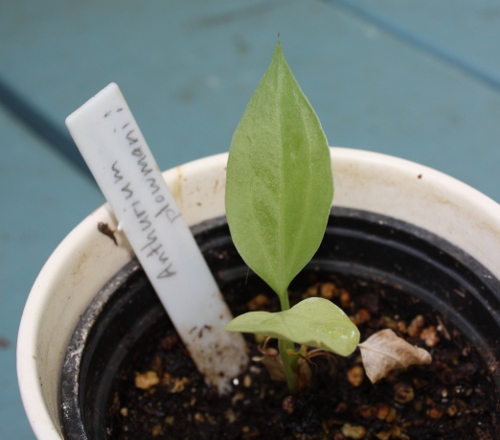 |
| Anthurium plowmanii seedling, finally starting to grow. |
The same IAS member recently sent me three pots with seedlings he had started of
Anthurium bakeri. I put the little pots in a couple of different places and two of them got hammered by the hail a couple of weeks ago. They have since been moved into the greenhouse, where they might get a little hotter, but will be more protected from the wind and elements.
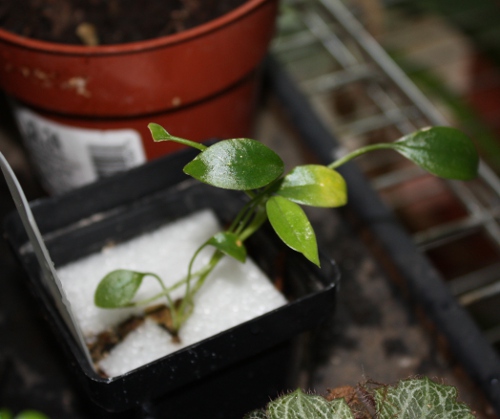 |
| Anthurium bakeri seedling also from Danny |
I have recently had the opportunity to start a couple of different aroids from seed and had some success, so I thought I would share the pictures of my own little aroidlings (aroid seedlings). The
Anthurium pallidiflorum seeds I got from Albert and
planted back in April are holding steady. Not a lot of growth lately, but they seem to be doing okay. Maybe they will burst forth after 15 months, like the
A. plowmanii!
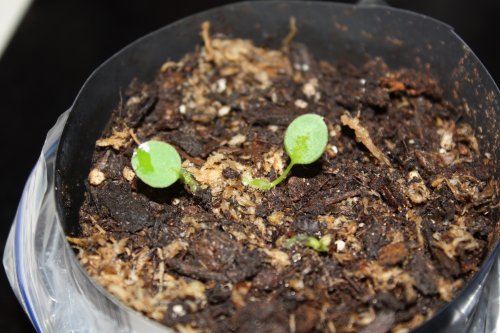 |
| Anthurium pallidiflorum I started from seed - pictured on April 23. |
My friend, Leland, sent me several hundred seeds from one of his hybrid meconostigma
Philodendron that recently flowered and fruited. I then sent a bunch of the seeds to 5 or 6 different people around the country that were interested in trying to grow these plants. We all had very good germination rates. I didn't count the number of seeds that I carelessly scattered over sphagnum moss, but I wouldn't be surprised if every one of them had germinated. It certainly seems that way.
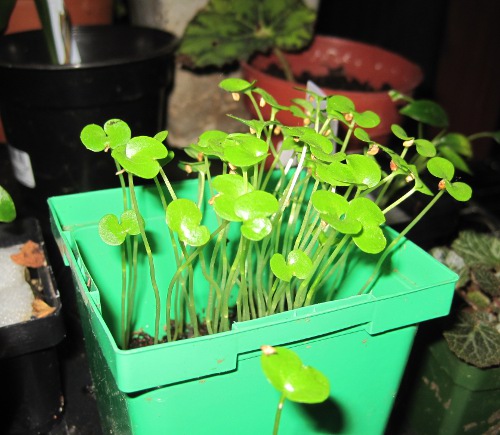 |
| Hybrid Philodendron seedlings |
The really cool thing about aroid seeds is how fast they germinate. I mean, it was a matter of a day or two before they were popping open and showing their cotyledon leaves. It was several more weeks before the first true leaf would arrive for me. But even then, I had a small plant in very little time.
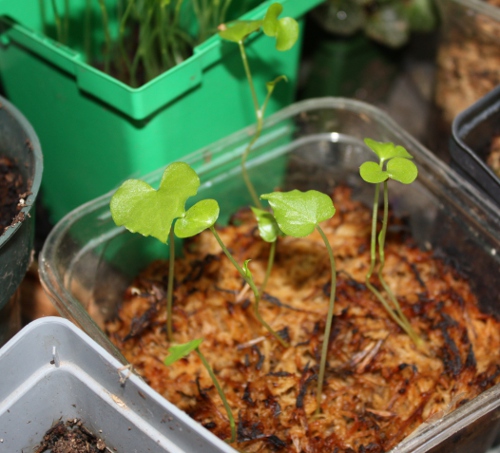 |
| Hybrid Philodendron seedlings showing the first true leaves. The true leaves are the cordate (heart-shaped) ones. 2011-07-01 Correction: Hybrid Philodendron seedlings, still not showing the true leaves. Cordate leaves are Pinellia tripartita seedlings. |
Leland doesn't know the exact parentage of these seeds, but we know that
Philodendron stenolobum is involved.
Another IAS friend and fellow blogger,
Derek, sent me some seeds from his
Pinellia tripartita, which had bloomed and fruited recently.
Unfortunately, neither of us had any luck getting these to germinate, so perhaps they weren't viable. [2011-07-01 Update: I was wrong! The cordate leaves above are actually the Pinellia seedlings! So I got germination from those seeds after all, and my Philodendron seedlings are not as far progressed as I had thought.]
If my Aglaonema berries ever mature, maybe I'll finally get to give them a try. They have been on the plant for several months now, but I am waiting until they start to fall off the plant to know they are ripe.





Glad you are having more luck with seed!
ReplyDeleteI enjoyed reading about starting plants,must
ReplyDeletebe rewarding to watch those seeds germinate and develop.Congrats!
Your seedlings look great! And an update on that Pinellia: my seeds finally sprouted! http://flic.kr/p/9YoQGp
ReplyDelete